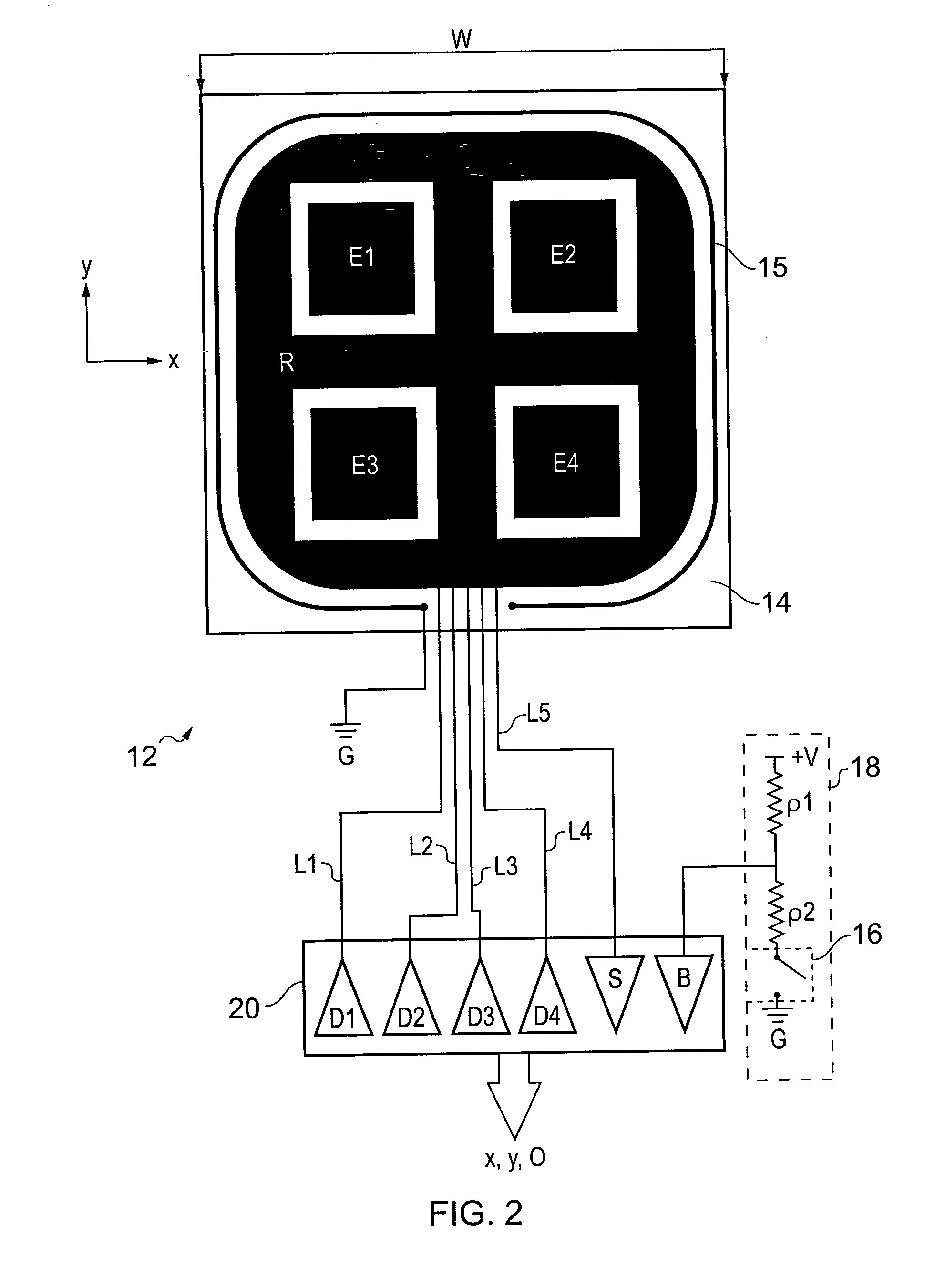Two-dimensional position sensor
a two-dimensional position and sensor technology, applied in the field of sensors, can solve the problems of increasing cost, size and power consumption, significant amount of associated control circuitry, and reliance on passive capacitance measurement techniques, and achieve good response characteristics
- Summary
- Abstract
- Description
- Claims
- Application Information
AI Technical Summary
Benefits of technology
Problems solved by technology
Method used
Image
Examples
Embodiment Construction
[0037]FIG. 2 schematically shows a sensor 12 for determining a position of an object in two dimensions according to an embodiment of the invention. In this example the two directions are a horizontal direction X and a vertical direction Y for the orientation of the sensor shown in FIG. 2.
[0038]The sensor 12 comprises a substrate 14 bearing an electrode pattern defining a sensitive area of the sensor and a controller 20. The sensor also comprises a mechanical switch 16 (shown highly schematically in FIG. 2) and associated switch circuitry 18 (comprising voltage supply +V; first and second resistors ρ1 and ρ2; connection to a system reference potential (ground) and associated wiring).
[0039]The electrode pattern consists of four drive electrodes E1, E2, E3, E4 arranged in a two-by-two array and a single electrically continuous sense electrode R arranged to extend around the four drive electrodes. The controller 20 provides the functionality of four drive channels D1, D2, D3, D4 for sup...
PUM
 Login to View More
Login to View More Abstract
Description
Claims
Application Information
 Login to View More
Login to View More - R&D
- Intellectual Property
- Life Sciences
- Materials
- Tech Scout
- Unparalleled Data Quality
- Higher Quality Content
- 60% Fewer Hallucinations
Browse by: Latest US Patents, China's latest patents, Technical Efficacy Thesaurus, Application Domain, Technology Topic, Popular Technical Reports.
© 2025 PatSnap. All rights reserved.Legal|Privacy policy|Modern Slavery Act Transparency Statement|Sitemap|About US| Contact US: help@patsnap.com



